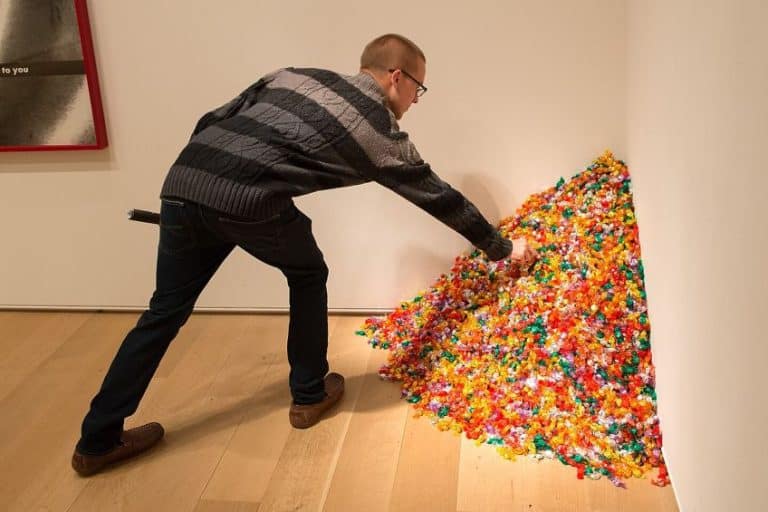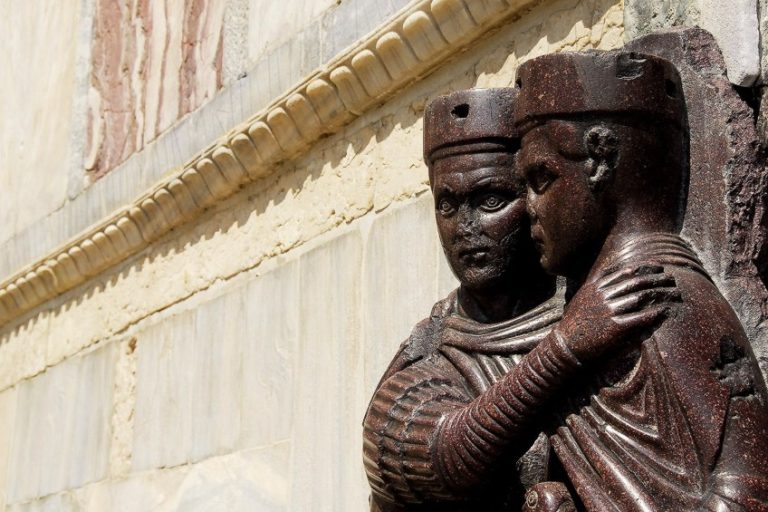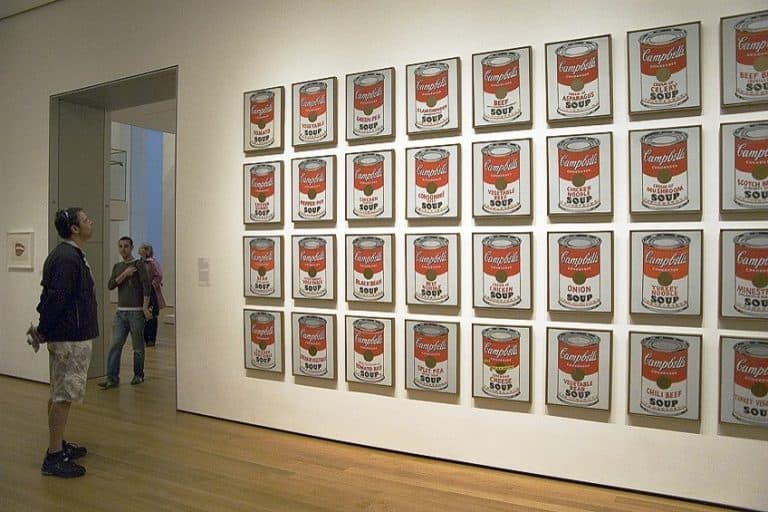Donatello Sculptures – The Pioneer of Renaissance Sculpture
The Legacy Left by Donatello
Donatello’s legacy in the art world is profound and far-reaching, shaping the course of Renaissance art and influencing generations of artists to come. His innovative approach to sculpture, characterized by lifelike anatomy, dynamic poses, and emotive expression, revolutionized the way artists portrayed the human form. Through his mastery of techniques such as perspective, chiaroscuro, and contrapposto, Donatello brought sculptures to life, infusing them with a sense of movement and realism previously unseen.

Donatello’s contributions to the development of bronze casting techniques expanded the possibilities of sculptural art, allowing for greater detail and intricacy in both small and monumental works. His experimentation with different materials, from marble and bronze to terracotta and wood, showcased his versatility and technical expertise. Beyond his technical innovations, Donatello’s thematic range, which encompassed religious, mythological, and secular subjects, reflected the intellectual and cultural dynamism of the Renaissance period.
Through his enduring legacy, Donatello remains celebrated as one of the greatest sculptors in art history, leaving behind a rich and enduring artistic heritage.
Top 9 Most Famous Donatello Sculptures to Know
In this section, we explore the top 10 artworks by Donatello, a renowned figure of the Italian Renaissance whose mastery of sculpture and profound understanding of human expression have left an indelible mark on art history. Each artwork in this list showcases Donatello’s exceptional skill in capturing lifelike forms, emotive narratives, and spiritual depth, spanning themes from religious devotion to heroic triumphs. Through these iconic pieces, we delve into the essence of Donatello’s artistic vision and the enduring impact of his monumental contributions to the world of art and culture.

St. George Tabernacle (1415 – 1417)
| Date | 1415 – 1417 |
| Medium | Sculpture |
| Dimensions (cm) | Not specified |
| Where Is It Housed? | Museo Nazionale del Bargello, Florence, Italy |
The St. George Tabernacle is a marble sculpture housed in the Orsanmichele church in Florence, depicting the legendary Christian martyr, St. George, slaying the dragon. Donatello’s rendition of St. George is notable for its dynamic composition, capturing the moment of victory and heroism. The sculpture is significant as it showcases Donatello’s early mastery of the medium, with intricate detailing in St. George’s armor and the dramatic movement of the dragon.
Its placement in a prominent Florentine church highlights its religious importance and Donatello’s skill in creating powerful and emotive religious imagery.

Madonna of the Clouds (c. 1425 – 1435)
| Date | c. 1425 – 1435 |
| Medium | Sculpture |
| Dimensions (cm) | Not specified |
| Where Is It Housed? | Museum of Fine Arts, Boston, United States |
The Madonna of the Clouds is a marble sculpture housed in the Victoria and Albert Museum in London, showcasing Donatello’s early Madonna compositions. This sculpture depicts the Virgin Mary standing gracefully with the Christ Child on a cloud, surrounded by cherubs. Its significance lies in its innovative composition, with Mary appearing weightless and ethereal as if floating in the sky.
The sculpture’s gentle expressions and delicate details, such as the flowing drapery and the playful cherubs, convey a sense of divine serenity and maternal tenderness, reflecting Donatello’s skill in capturing human emotion and spirituality.
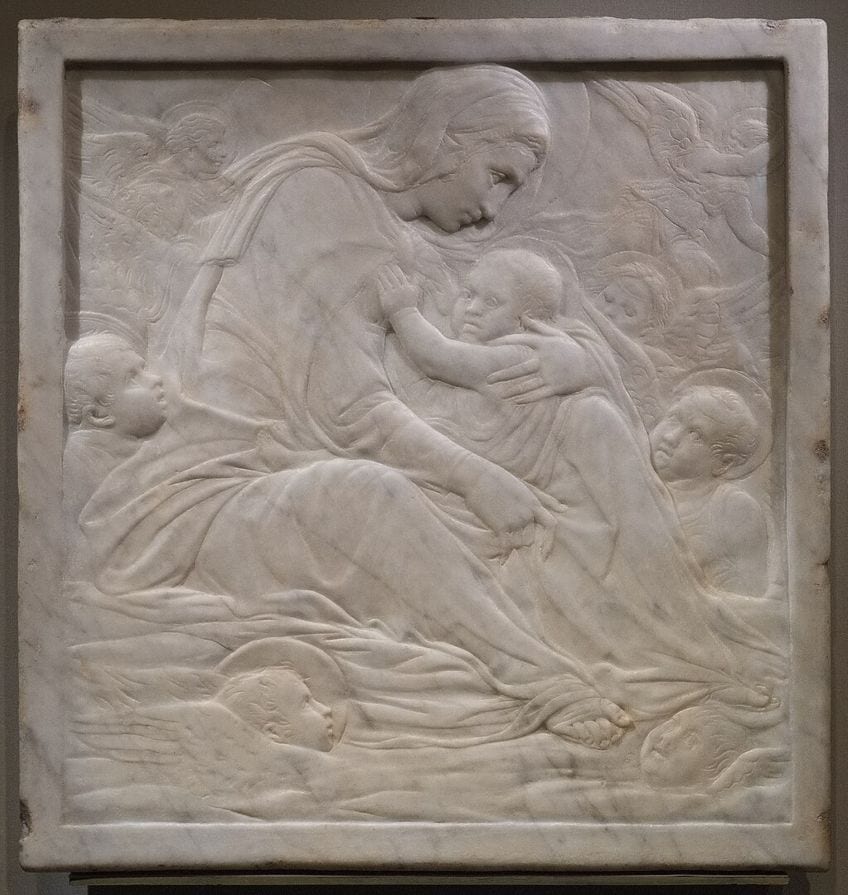
Prophet Habakkuk (1425 – 1435)
| Date | 1425 – 1435 |
| Medium | Sculpture |
| Dimensions (cm) | Not specified |
| Where Is It Housed? | Florence Cathedral, Florence, Italy |
The Prophet Habakkuk is a marble sculpture located on the Campanile in Florence, part of a series of Old Testament prophets created by Donatello. This sculpture portrays the prophet Habakkuk in a contemplative pose, holding a scroll and gazing upward. Its importance lies in its representation of prophetic figures, conveying a sense of spiritual depth and divine inspiration.
Donatello’s attention to detail, such as the intricate folds of Habakkuk’s robes and the expressive facial features, adds a sense of realism and emotion to the sculpture, making it a compelling example of Renaissance religious art.

The Feast of Herod (c. 1427)
| Date | c. 1427 |
| Medium | Sculpture |
| Dimensions (cm) | Not specified |
| Where Is It Housed? | Baptistery of San Giovanni, Siena, Italy |
The Feast of Herod is a relief panel located in the Baptistry of San Giovanni in Siena, Italy, depicting the biblical scene of the beheading of John the Baptist. This relief is significant for its dramatic portrayal of the event, with Herod and Salome prominently featured in the composition. Donatello’s skill in creating depth and movement within the relief, such as the swirling drapery and dynamic poses of the figures, adds a sense of tension and narrative intensity to the scene.
The Feast of Herod exemplifies Donatello’s ability to merge classical aesthetics with religious subject matter, creating a compelling and emotionally charged artwork.

Cantoria (1433 – 1439)
| Date | 1433 – 1439 |
| Medium | Sculpture |
| Dimensions (cm) | Approximately 415 x 870 cm (with base) |
| Where Is It Housed? | Museo dell’Opera del Duomo, Florence, Italy |
The Cantoria, also known as the Singing Gallery, is a marble choir loft created for Florence Cathedral. This sculptural ensemble features a lively composition of singing and dancing children, musicians, and angels, conveying a sense of joy and celebration. Its importance lies in its depiction of music and worship, with each figure exuding energy and movement. Donatello’s mastery of sculptural form is evident in the dynamic poses and expressions of the figures, creating a harmonious and vibrant scene that enhances the spiritual atmosphere of the cathedral.
The Cantoria is a testament to Donatello’s ability to capture the essence of music and religious devotion through sculpture.
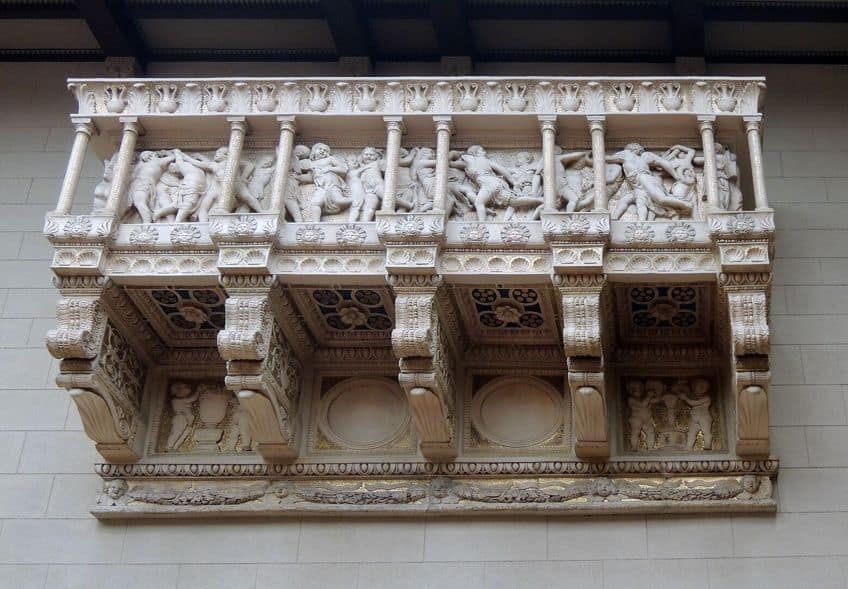
The Annunciation (c. 1435 – 1440)
| Date | c. 1435 – 1440 |
| Medium | Sculpture |
| Dimensions (cm) | Not specified |
| Where Is It Housed? | Santa Croce Basilica, Florence, Italy |
Donatello’s relief sculpture, The Annunciation, depicts the biblical scene of the Angel Gabriel announcing to the Virgin Mary that she will conceive and bear Jesus. Created for the Church of Santa Croce in Florence, this work is significant for its delicate portrayal of the momentous event. The relief captures the grace and humility of Mary as she receives the divine message, while the angel Gabriel appears in a reverent posture.
Donatello’s attention to detail, such as the intricate drapery and subtle expressions, imbues the scene with a sense of reverence and spiritual significance, making it a powerful representation of the Annunciation narrative.

David (1440 – 1460)
| Date | 1440 – 1460 |
| Medium | Sculpture |
| Dimensions (cm) | 158 (height) |
| Where Is It Housed? | Bargello Museum, Florence, Italy |
Donatello’s bronze statue of David, now housed in the Bargello Museum in Florence, is one of his most iconic and celebrated works. The sculpture portrays David in a triumphant pose, holding the head of Goliath after his victory. Its importance lies in its innovative depiction of the biblical hero, showcasing David as a youthful and confident figure. Donatello’s mastery of anatomy and movement is evident in the dynamic stance and lifelike proportions of the sculpture, while the expressive features convey David’s courage and determination.
The statue of David is a testament to Donatello’s skill in capturing heroic narratives and human emotion in sculpture.

Equestrian Monument of Gattamelata (1445 – 1453)
| Date | 1445 – 1453 |
| Medium | Sculpture |
| Dimensions (cm) | Approximately 340 x 390 x 185 cm |
| Where Is It Housed? | Piazza del Santo, Padua, Italy |
Commissioned as a funerary monument for the Venetian condottiero Erasmo da Narni, known as Gattamelata, this equestrian statue is located in Padua, Italy. The monument is significant for its monumental scale and realistic portrayal of the horse and rider. Donatello’s attention to detail, such as the intricate armor and the powerful movement of the horse, adds a sense of grandeur and authority to the sculpture.
The Equestrian Monument of Gattamelata is considered a masterpiece of Renaissance equestrian sculpture, showcasing Donatello’s ability to create monumental works that command attention and reverence.
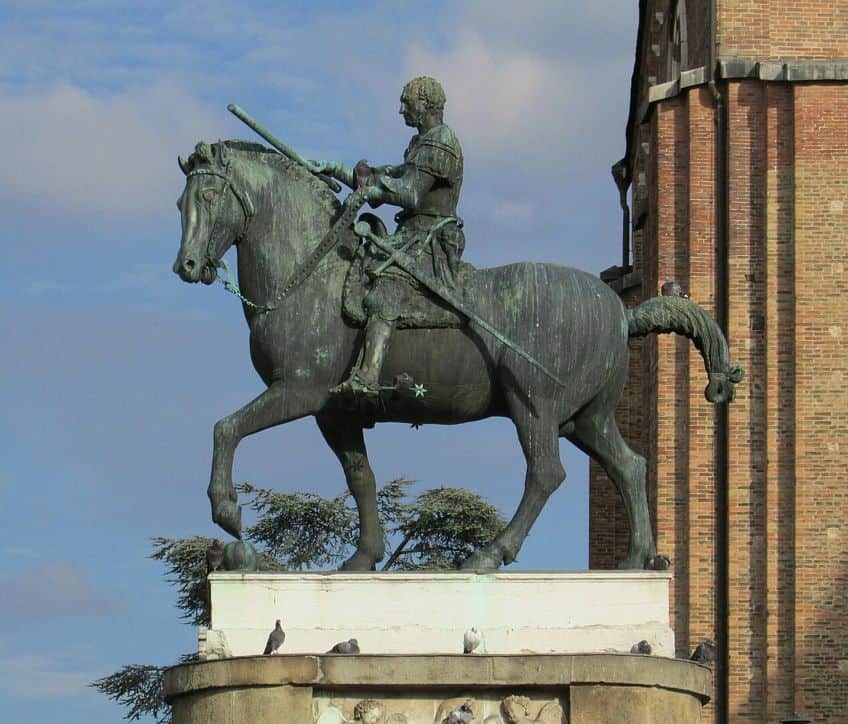
Mary Magdalene (c. 1455 – 1456)
| Date | c. 1455 – 1456 |
| Medium | Sculpture |
| Dimensions (cm) | Approximately 188 x 94 x 71 cm |
| Where Is It Housed? | Museo dell’Opera del Duomo, Florence, Italy |
Donatello’s wooden sculpture of Mary Magdalene, housed in the Museo dell’Opera del Duomo in Florence, portrays the biblical figure in a contemplative and penitent pose. The sculpture is significant for its emotional depth and spiritual introspection, capturing Mary Magdalene’s repentance and devotion. Donatello’s skill in wood carving is evident in the expressive features and the detailed rendering of the drapery, adding a sense of realism and texture to the sculpture. Mary Magdalene’s portrayal as a penitent figure reflects Donatello’s exploration of religious themes and the human experience of redemption and forgiveness.
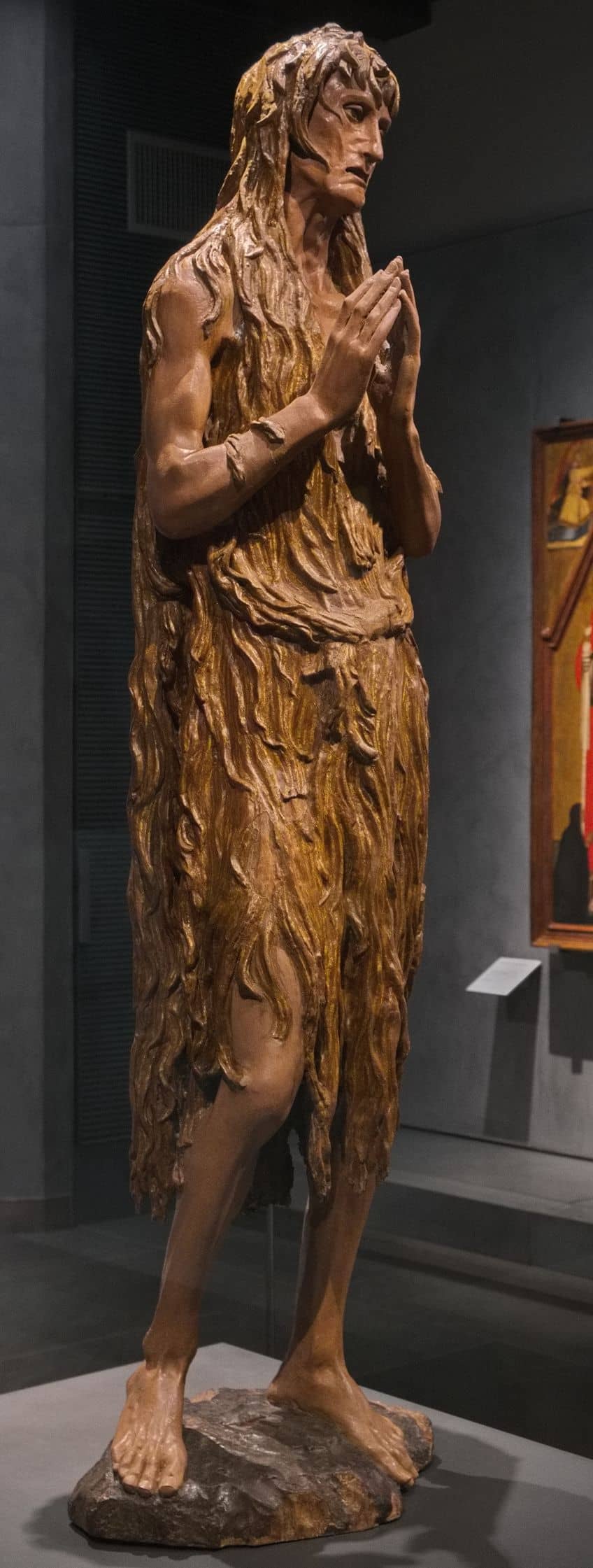
Donatello’s sculptures stand as enduring masterpieces that epitomize the artistic achievements of the Italian Renaissance. Through his unparalleled skill in sculpting lifelike figures, his innovative use of materials, and his ability to imbue his works with emotional depth and narrative richness, Donatello has secured his place as one of the greatest sculptors in art history. From the iconic David to the expressive St. George Tabernacle and the monumental Equestrian Monument of Gattamelata, each sculpture reflects Donatello’s mastery of form, composition, and symbolism, leaving a lasting legacy that continues to captivate and inspire audiences around the world. His contributions not only shaped the course of Renaissance sculpture but also laid the foundation for future generations of artists, making Donatello an enduring beacon of artistic excellence and creativity.
Frequently Asked Questions
What Themes Did Donatello Often Explore in His Sculptures?
Donatello’s sculptures often explored themes such as religious devotion, heroic narratives, and human emotion. He depicted biblical figures, mythological heroes, and historical figures with a keen attention to detail and a deep understanding of anatomy, capturing moments of triumph, introspection, and spiritual significance.
What Is Donatello’s Legacy in the Art World?
Donatello’s legacy in the art world is immense. He is revered for his technical innovations, lifelike sculptures, and contributions to Renaissance art. His legacy includes inspiring future generations of artists, influencing the development of sculpture and artistic techniques, and leaving behind a rich body of work that continues to be studied and admired today.
Isabella studied at the University of Cape Town in South Africa and graduated with a Bachelor of Arts majoring in English Literature & Language and Psychology. Throughout her undergraduate years, she took Art History as an additional subject and absolutely loved it. Building on from her art history knowledge that began in high school, art has always been a particular area of fascination for her. From learning about artworks previously unknown to her, or sharpening her existing understanding of specific works, the ability to continue learning within this interesting sphere excites her greatly.
Her focal points of interest in art history encompass profiling specific artists and art movements, as it is these areas where she is able to really dig deep into the rich narrative of the art world. Additionally, she particularly enjoys exploring the different artistic styles of the 20th century, as well as the important impact that female artists have had on the development of art history.
Learn more about Isabella Meyer and the Art in Context Team.
Cite this Article
Isabella, Meyer, “Donatello Sculptures – The Pioneer of Renaissance Sculpture.” Art in Context. April 2, 2024. URL: https://artincontext.org/donatello-sculptures/
Meyer, I. (2024, 2 April). Donatello Sculptures – The Pioneer of Renaissance Sculpture. Art in Context. https://artincontext.org/donatello-sculptures/
Meyer, Isabella. “Donatello Sculptures – The Pioneer of Renaissance Sculpture.” Art in Context, April 2, 2024. https://artincontext.org/donatello-sculptures/.




